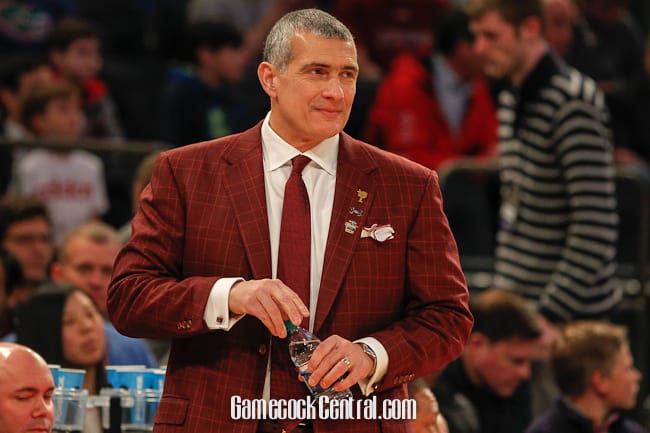What coaches are saying: NCAA eligibility ruling
An assistant coach of a Division 1 low-major program texted me last night saying, “Prep Schools just got better. D2 just got better. D3 just got better. JUCO just got better.”
Stadium's Brett McMurphy published the news on Wednesday afternoon that the NCAA officially approved an additional year of eligibility to all winter sport athletes.
This ruling essentially allows all student-athletes a free season, effectively a red-shirt year.
"There wasn't a discussion around roster size," added Jeff Goodman, also of Stadium. "Source said, 'those who exhausted eligibility will be exempted from counting against 13 scholarship limit.'"
This immediately puts the recruiting process into a frenzy with more questions being asked then answers being provided.
I spent last night talking with 25 Division 1 coaches from all levels across the country to get their thoughts on how they see things transpiring. For the purpose of this piece, I won’t refer to any coach by name, school or league, only level. During our conversations, we talked about how this affects their current players, how it will affect their recruiting and how it will affect high school recruits in general.

“This will majorly effect the 2021 class,” one mid-major coach said. Not every senior will want to come back but just the transfer rule alone will make grad transfers and spring high school kids less relevant.”
The coach of a high-major program said expressed a sense of urgency for senior prospects.
“A lot of guys will get left in the cold unless they act now,” he said.
“Heck, if I’m a 2021 I’m trying to get to school in January if the scholarship is there,” agreed another high-major coach. “ I can play second semester and still be a freshman next year. If they allow the current (college) seniors to graduate and go play somewhere, it could get really tricky for 2021s too.”
This development raises another key question: Where will this scholarship money come from, especially on the heels of a pandemic that’s forced athletic departments into budget cuts and furloughs.
“This forces most schools to make a decision if they will offer the extra year because budgets will come into play,” a coach told me. “I am not sure how many scholarship players will be allowed here. We’re talking schollys plus gear, travel, meals, cost of attendance, etc…”
Another coach at a mid-major program said, “If they say schools are able to carry more scholarships, I don’t see how mids and lows can afford it. Even if able to carry 13+ scholarships, someone has to pay for it, with budget and position cuts, with sports being cut, I just don’t see how it could work everywhere.”
While it’s true that much of the focus on this ruling surrounds the 2021 class, some coaches also warned against the effect on the next crop in 2022.
“So let me break it down this way: If all our seniors come back we could, by the rule, have (over 13) scholarship guys next season. That will not affect the 2021s getting here (now keeping them happy is another thing). Seniors who come back won’t count against your 13,” a high-major coach said. “The next year, everyone is back at 13 no matter what, but you have juniors who get an extra year. So technically no one has open scholarships that year, it makes sense. Add on top of guys are able to transfer and play right away. You basically will have a whole graduating class of college guys in 2022 that will have an extra year to use which will limit available scholarships for that class.”
“This will be huge for the 2021 class, but will affect 2022 even more,” a different coach suggested. “Because the 1-time transfer rule will be in effect for them, more so. Teams already have 2021 commitments.”
“Would you rather be a 2022 that can come in an earlier class where you may have some guys in front of you but that is essentially a redshirt year?” another asked. “We are more inclined to keep that kid who is already with us. Heck, if you don’t like your current situation (under this scenario) you can just transfer and be able to play right away.”
While college basketball has seen plenty of activity in recent years in the transfer and graduate transfer market, coaches also anticipate an uptick in that department.
“I think you’re going to see a crazy amount of 2022 prospects not get recruited because everyone will be playing the transfer game," a coach told me.
“This whole ruling makes signing in the spring (for 2021s) very difficult,” said another. “There will be so many players who are on the (transfer) market There will not be enough space for everyone. There will be a lot of really good players going D2 and a lot going to prep school too.”
This movement for next season could also trigger higher interest in overseas prospects and hurt programs on another level of the game.
“Freshman and sophomore transfers will be the hottest commodity, D1, D2 and D3s. D3 is high level basketball at its highest level,” said a coach. "A few went high major this year. Juco will be tough, it may die. International kids and transfers will be the two biggest thriving groups of recruits.”
“Man, I think some guys aren’t going to have spots to take kids because guys will return for another year,” a high-major coach said. “But I think the biggest impact will be mid-major kids using that rule to go high major even though they don’t have a grad transfer year.”
Many of the coaches I spoke with across all levels expressed they feel the unintended consequences of these rulings will be “crazy”.
There is sure to be more information flow out in the coming days and months. And as this ruling gets put in to play, things will iron themselves out under a new normal.
Follow Absolute Basketball Company and Jamie Shaw on social media:
Twitter: @JamieShaw5
IG: @Jamie_Shaw5

